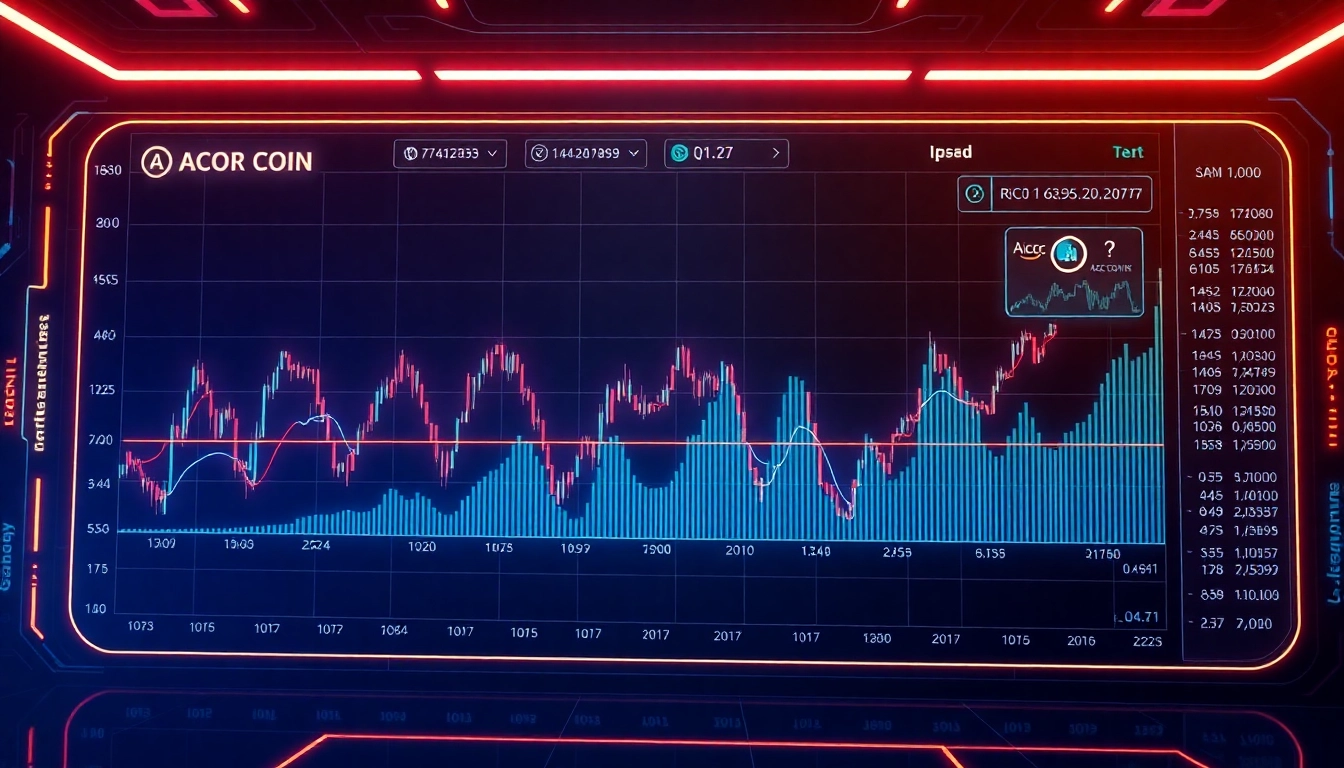Understanding Staking ETH: How It Works and Why It Matters
Ethereum’s transition to a proof-of-stake (PoS) consensus mechanism has revolutionized how investors and developers engage with the network. Staking ETH not only secures the blockchain but also offers a lucrative opportunity for passive income. By locking your Ethereum holdings in a secure and transparent environment, you contribute to network stability while earning rewards—making it a compelling addition to diversified crypto portfolios. For those interested in maximizing their staking returns through a streamlined, secure platform, exploring advanced solutions like staking eth via Super can significantly enhance your experience and profitability.
Basics of Ethereum Staking
Ethereum staking involves locking a minimum of 32 ETH into the network’s smart contract to become a validator. Validators are responsible for processing transactions, proposing blocks, and maintaining the network’s integrity. This process aligns incentives by rewarding validators with newly minted ETH and transaction fees. Unlike traditional proof-of-work (PoW), staking reduces energy consumption and promotes decentralization. Stakeholders can participate directly by running a validator node or through staking pools that aggregate multiple small stakes, lowering barriers to entry.
Typical returns from Ethereum staking vary between 4% and 6.5% APR, depending on network conditions, validator performance, and the staking protocol’s fee structures. Rewards are paid out in ETH and are subject to network dynamics, including protocol upgrades and market volatility.
How Super Simplifies ETH Staking
Traditional ETH staking requires technical knowledge, managing validator nodes, or navigating multiple platforms. Super offers a comprehensive, user-friendly interface that automates the entire process. Through Super, you can connect your Web3 wallet, select your preferred staking strategy, and start earning passive income instantly—all while maintaining full control of your assets. Super aggregates thousands of high-yield pools across numerous protocols and blockchains, automatically optimizing your staking APRs and reallocating your assets to the most profitable opportunities in real time.
Furthermore, Super’s platform eliminates the need for manual research by automatically rerouting your funds into the highest-yield, most secure pools. Its non-custodial, transparent architecture ensures your Ethereum remains under your control, with assets never lent out or reappropriated without your permission.
Security and Transparency in ETH Staking
Security is paramount when dealing with digital assets. Super maintains rigorous security standards, including regular audits by industry-leading firms such as Certik, Cyberscope, and Assure DeFi. Its infrastructure is built on battle-tested smart contracts, multi-layer protections, and continuous monitoring systems that guarantee protocol integrity and user fund safety.
Moreover, Super operates a non-custodial model—your private keys are always controlled solely by you via your Web3 wallet. The platform is fully transparent, with open-source smart contracts available for review and verification. Its compliance with international security standards, including Fireblocks integration and multisignature safeguards, ensures that your assets are shielded from malicious attacks and vulnerabilities.
Key Strategies to Optimize Your Staking ETH Returns
Selecting the Best Staking Protocols for ETH
To maximize staking rewards, selecting the right protocol is critical. Leading platforms like Kraken, Coinbase, and Lido offer competitive APRs—ranging from 4% up to 6.5%. Lido, for example, provides liquid staking tokens such as stETH, enabling continuous liquidity and flexibility. Each protocol has unique advantages: some prioritize decentralization, others emphasize ease of withdrawal, and some offer lower fees.
Super enhances this selection process by aggregating pools across multiple protocols and blockchains. This allows users to benefit from the highest possible yields without manually switching between platforms. Its real-time analytics engine continuously scans over 17,600 pools, reallocating assets to optimize returns dynamically.
Maximizing Rewards with Automated DeFi Tools
Automation tools like Super’s yield optimizer streamline the process further. They automatically rebalance, compound, and switch assets between various pools, protocols, and blockchains. This strategy minimizes manual intervention and mitigates risks associated with protocol-specific issues or market downturns. For instance, automated restaking and liquidity pooling enable double-digit APRs by leveraging multiple layer strategies.
Users can implement custom strategies or follow community-shared vaults, tapping into expert curation and algorithmic strategies that adjust to market conditions for optimal performance.
Mitigating Risks: Slashing and Lock-up Periods
Despite its advantages, ETH staking involves inherent risks. Slashing, a penalty for validator misbehavior, can result in partial loss of staked ETH. Lock-up periods, especially when manually unstaking, can take days or weeks, reducing liquidity during market volatility. Super addresses these risks through decentralized smart routing, diversified pools, and quick withdrawal options—sometimes within 6 seconds to 24 hours.
Additionally, Super uses multi-layer security audits, real-time monitoring, and protocol verifications to prevent slashing penalties or smart contract failures. Users should also diversify their staking across multiple protocols and leverage fixed or flexible lock-up terms to balance yield and liquidity needs.
Advanced Techniques: Restaking and Liquid ETH Solutions
What Is Restaking ETH and How It Boosts Income
Restaking is an innovative DeFi strategy pioneered by Super, allowing stakers to reuse their existing locked ETH to earn additional rewards without unstaking or reducing their staking position. Essentially, once you stake ETH, you can restake the same assets across multiple protocols or layers, effectively earning double or triple yields. This boosts your capital efficiency and accelerates your passive income growth.
Restaking involves delegating your already-staked ETH to secondary validators or protocols that reward re-use with tiered incentives. Super’s platform ensures this process is non-custodial and secure, safeguarding your assets while maximizing returns—often starting from an APY of 6%, with some strategies exceeding double digits.
Using Liquid Staking Derivatives for Flexibility
Liquid staking derivatives such as stETH, cbETH, and others produced by protocols like Lido enable users to maintain liquidity while earning staking rewards. These tokens can be used across DeFi platforms for lending, trading, or yielding additional returns. Super supports a broad array of liquid staking tokens, allowing seamless integration with liquidity pools, yield strategies, and synthetic asset vaults.
This flexibility empowers investors to capitalize on market opportunities without sacrificing their staked ETH’s earning potential, effectively turning illiquid bonds into active financial instruments.
Implementing Multi-Protocol Strategies Safely
Combining restaking and liquid assets requires careful risk management. Super’s security audits, protocol diversification, and auto-routing features enable safe implementation. Users can create automated multi-protocol vaults that allocate assets based on performance, volatility, and risk appetite. Regular monitoring and transparent reporting ensure you stay informed, enabling adjustments to optimize yield while mitigating exposure to protocol-specific risks.
Comparison: Top Platforms for Staking ETH in 2024
Features and Benefits of Leading Platforms
Leading staking platforms like Kraken, Ledger, Coinbase, and Binance offer varying APRs, withdrawal terms, and user experiences. Kraken provides up to 6.5% APR with a straightforward interface, while Ledger focuses on security hardware solutions coupled with staking features. Coinbase and Binance offer flexible, accessible staking options integrated into their ecosystems. However, these platforms often have lock-up periods ranging from days to weeks, and fees vary.
Super differentiates itself by offering aggregate, automated, and real-time yield optimization across hundreds of protocols and blockchains. Its non-custodial architecture, immediate withdrawal options, and multi-layer security audits make it superior for high-yield, secure, and flexible ETH staking.
Security Standards and Audits Overview
Security in DeFi is non-negotiable. Super maintains an immaculate record grounded in comprehensive audits conducted by industry leaders such as Certik, Cyberscope, and Assure DeFi. Regular, full-system audits address potential vulnerabilities. Its smart contracts are open-source, transparent, and verified, with continuous protocol activity monitoring.
Conversely, some traditional platforms rely on custodial models that expose user funds to internal risks. Super’s non-custodial, contract-based approach ensures that users retain full ownership and control, significantly reducing the attack surface.
Which Platform Fits Your Investment Goals
For retail investors seeking straightforward, reliable staking, Coinbase and Binance offer user-friendly interfaces with moderate APRs. For institutional investors or power users desiring automation, diversification, and maximum yield optimization, Super offers unmatched capabilities—aggregating pools, supporting cross-chain staking, and enabling advanced strategies like restaking, liquidity provision, and synthetic assets.
Getting Started: Step-by-Step Guide to Stake ETH with Super
Connecting Your Wallet Securely
Initiate your staking journey by connecting your preferred Web3 wallet—MetaMask, Trust Wallet, or Ledger—directly to Super’s platform. Ensure your wallet is secured with multi-factor authentication and that you are operating over a secure, private network. Once connected, your assets remain under your ownership, with no custody or private key exposure to Super.
Choosing Your Staking Options and Duration
Super offers flexible staking options, including fixed or variable APRs, lock-up periods from days to months, and advanced options like auto-compounding or tiered rewards. Select the asset, specify the amount, and choose your preferred duration—be it a short-term 30-day stake or a long-term lock-up of 180 days or more. The platform’s analytics and real-time APR data help optimize your choices.
Monitoring Rewards and Managing Liquidity
After staking, Super provides an intuitive dashboard to track your rewards, monitor protocol performance, and adjust your strategy. You can compound earnings automatically or manually withdraw your assets at any time, subject to your selected lock-up terms. Its rapid withdrawal feature ensures liquidity flexibility, essential during volatile market conditions. Regular alerts and analytics enable informed decision-making, enhancing your passive income strategy.



